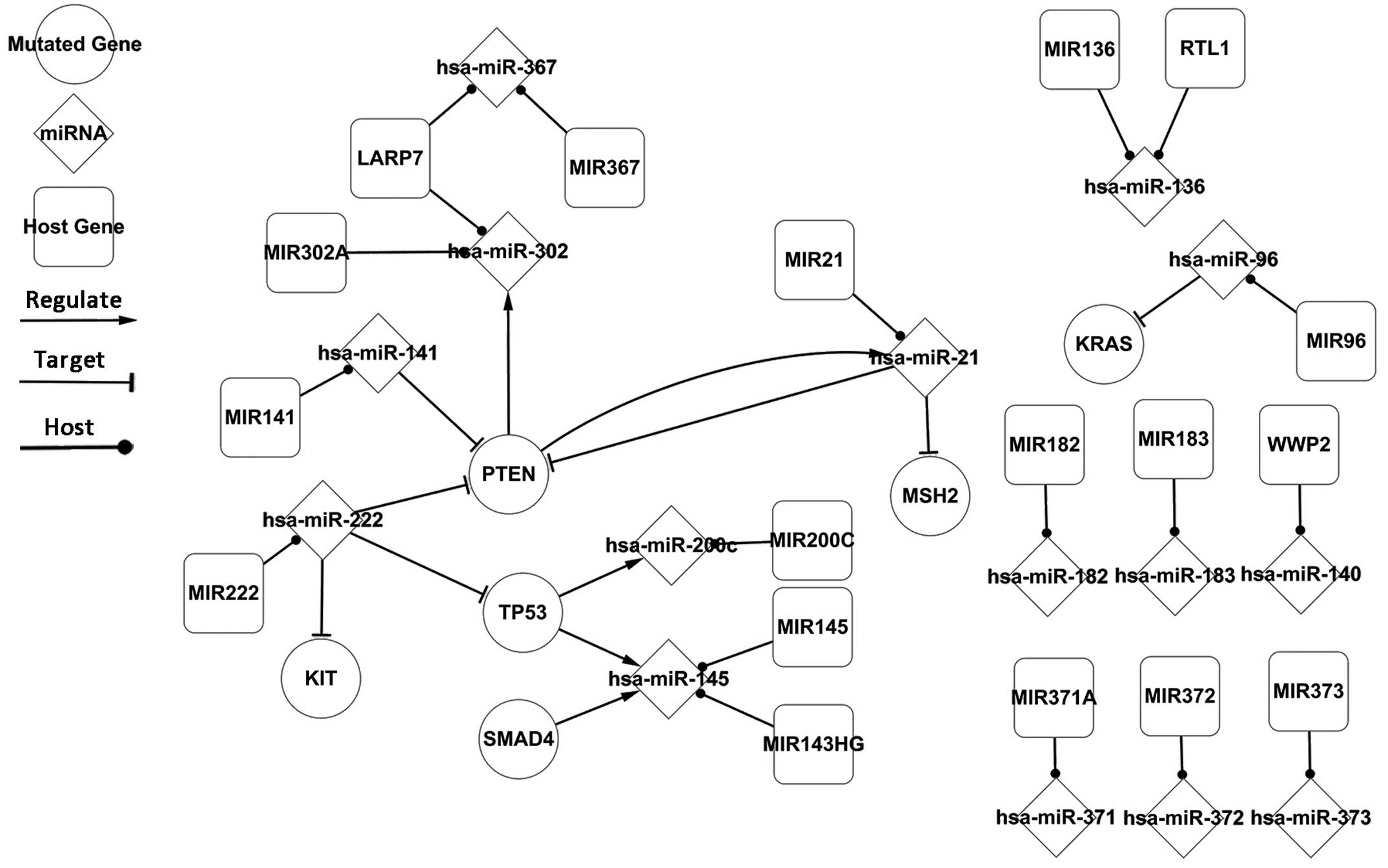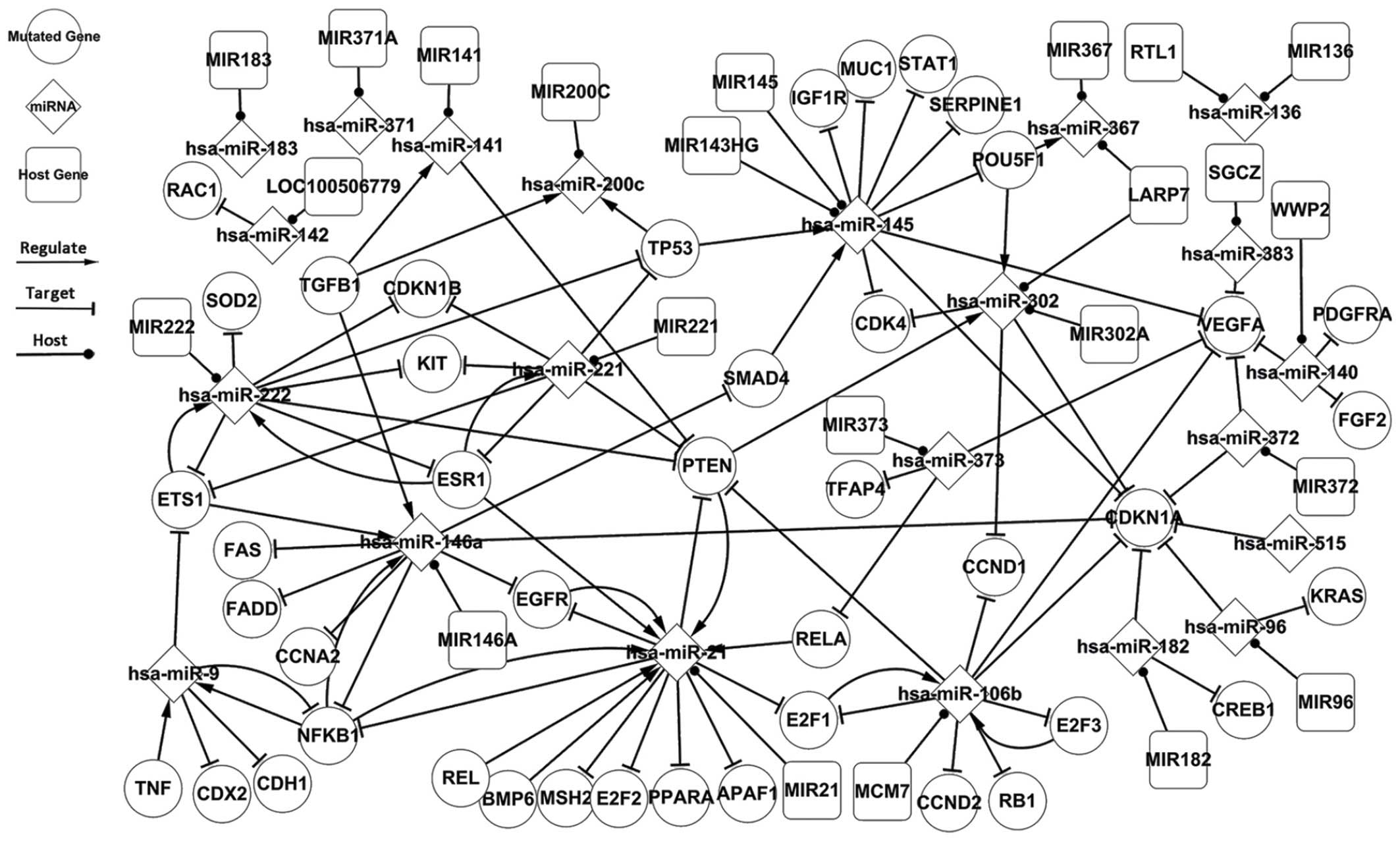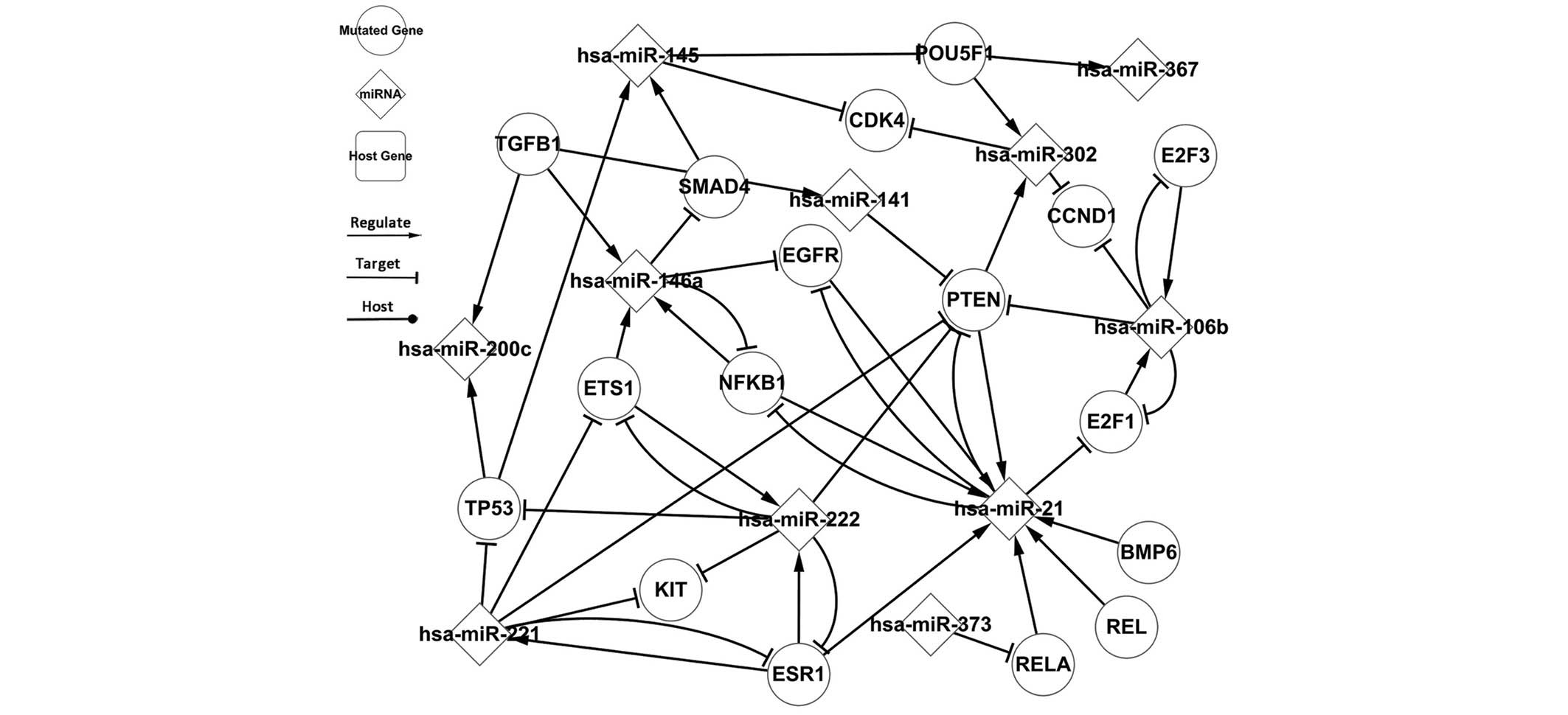Regulatory network of microRNAs and genes in testicular cancer
- Authors:
- Published online on: August 24, 2016 https://doi.org/10.3892/ol.2016.5043
- Pages: 3640-3646
Metrics: Total
Views: 0 (Spandidos Publications: | PMC Statistics: )
Total PDF Downloads: 0 (Spandidos Publications: | PMC Statistics: )
Abstract
Testicular cancer (TC) is the most common cancer in men between 20‑40 years of age. A large number of studies have focused on identifying the cause of this disease; however, the underlying regulatory mechanisms have not been thoroughly investigated and the specific cause remains unclear. The present study systematically analyzed the regulatory associations between genes, transcription factors (TFs) and microRNAs (miRNAs), aiming to obtain key information regarding the regulatory processes of TC. Three different networks were derived from the analysis: Global, related and differentially‑expressed. These networks may be able to identify the primary causes of TC through gene analysis, which determines underlying regulatory pathways and subsequently discloses information regarding TC pathology. The differentially‑expressed network is considered to be the most important. If the differentially‑expressed elements in this network were to be manipulated back to normal levels via human intervention, this may prevent the onset of TC. This may be described as suppressing TC at the genetic level. If the abnormal expression of these elements was to be corrected, then preventing TC at the source may be a feasible option. Thus, the present study compared and analyzed the global, related and differentially‑expressed networks, from which important genetic pathways in TC were highlighted. In addition, self‑adaptation associations, host genes and target genes were analyzed. The upstream and downstream elements were identified, and TFs were predicted using the P‑match method. When combined, the results of the current study provide the basic materials for further research on important genes in TC, and provide guidance on the pathological curative method.












